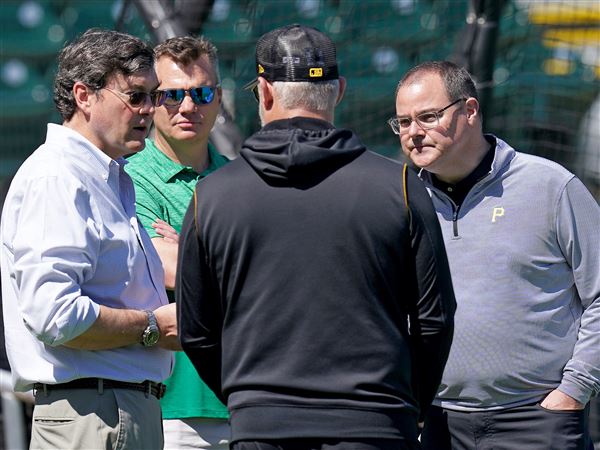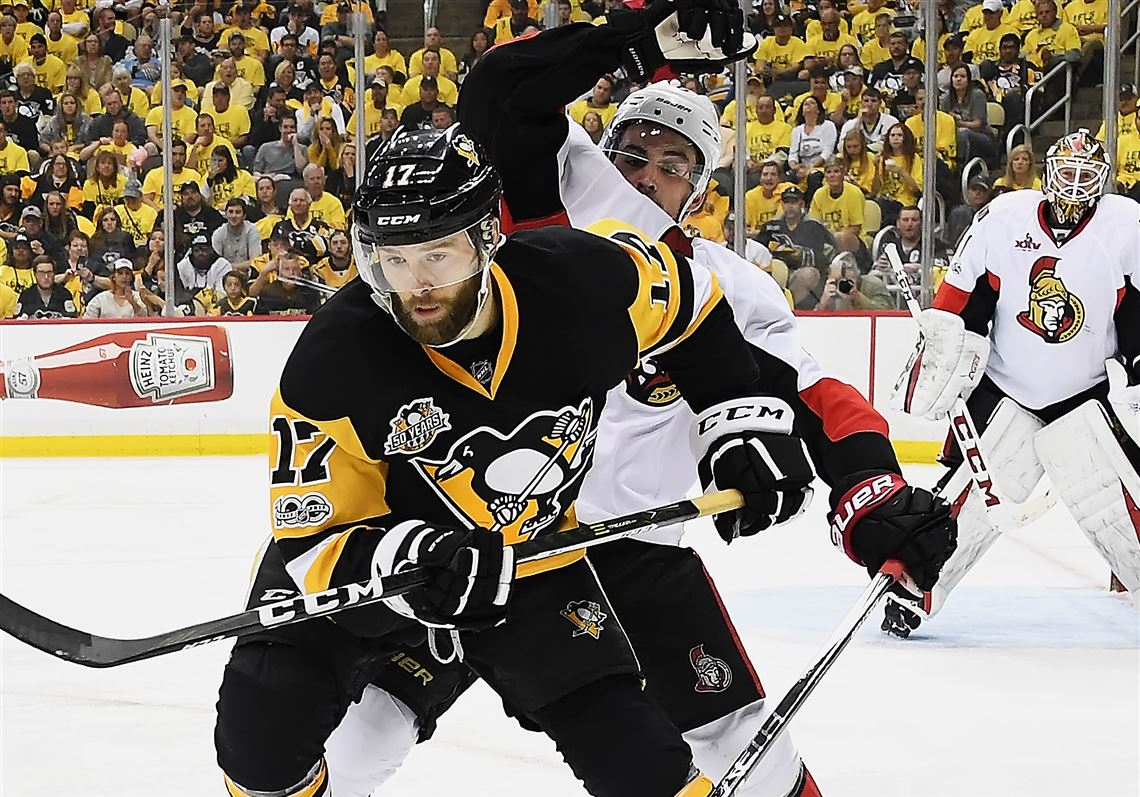Penguins Prospectus is an offseason project by Post-Gazette hockey writers Jason Mackey and Sam Werner that each weekday through Sept. 15 will examine 28 parts of the organization. Players and team personnel will appear according to when they played, coached or managed their first game with the Penguins, starting with Antti Niemi and ending with Sidney Crosby. For the full list of entries, click here.
Bryan Rust, winger
Shoots: right
Height/weight: 5-foot-11, 192 pounds
Age: 25
Date of Penguins debut: Dec. 13, 2014 in a 4-3 shootout loss at Columbus
How acquired: Selected in the third round (80th overall) of the 2010 NHL Draft
2016-17 stats: Had 15 goals and 13 assists in 57 regular-season games. Played in 23 playoff games, with seven goals and two assists.
Contract situation: Entering final year of contract, with a $640,000 cap hit. Will be a restricted free agent next summer.
HAT TRICK (THREE KEY NUMBERS)
3: Goals in elimination games — including two game-winners — for Rust this playoff run, giving him eight for his career.
51.7: Rust’s offensive zone start percentage this season, up from 42.8% in 2015-16.
13.6: Rust’s shooting percentage this season. His career average entering the year was 4.9%.
WHAT WE LEARNED
The 2016 Stanley Cup run wasn’t just a flash in the pan.
If Rust raised expectations during those playoffs, he largely met them in 2016-17. During that first Cup run, he averaged 0.26 goals per game, which would have been a bullish projection for him over the course of a full season.
Rust’s goals-per-game average this season? 0.26.
Granted, that only amounted to 15 goals, as Rust missed 25 games due to injury (including a 20-game stretch in February and March), but it’s hard to say Rust’s career didn’t take another step forward.
It didn’t exactly play out the way most expected it to, though. At the beginning of the year, Rust figured to be the favorite to play on Evgeni Malkin’s right wing, where he spent most of the 2016 Cup run. Instead, Rust missed the first three games of the season with a lingering injury and ended up barely playing on Malkin’s line at all.
He started off mostly on Nick Bonino’s line and midway through the year shifted up to play with Sidney Crosby and Conor Sheary in a sort of proto-“Sid and the Kids” for about 15 games. That was shortly before an upper-body injury cost him 20 games, and he came back only for the last nine before the postseason started.
Once the playoffs got underway, Rust ate a Magic Mushroom and powered up into Big Game Bryan Rust. He scored two goals (including the game-winner) in the Game 5 clincher against Columbus and got the deciding goal in Game 7 on the road against Washington.
Rust's only other two playoff goals came in the Game 5 blowout wins against Ottawa and Nashville, but he finished the playoffs as the Penguins’ fifth-leading goal-scorer.
The biggest key for Rust this season was his ability to continue converting scoring chances at the rate he did during the 2016 Cup run. Even though his speed is still his primary weapon, he’s a much more patient player than he was during his first year or two in the league. He doesn’t have a wicked shot, but he’s really, really smart about using his foot speed to create scoring chances for himself, and he’s good enough to bury those chances.
The other aspect of Rust’s game that helped the Penguins this season was his ability to move all around the lineup. He played on both wings and on every single line. He’s good enough offensively to play with Sidney Crosby and a pesky enough forechecker to be an effective fourth-line guy.
All of that — plus his uncanny big-game ability — made Rust a vital part of this second Stanley Cup run.
2016-17 HIGHLIGHT
Game 7 against Washington. What else could it be? The Penguins were coming off back-to-back losses, including a 5-2 defeat at home in Game 6. Was this going to be the year the Capitals finally broke through?
Nope.
Midway through the second period, Crosby made a nice tight-area pass to Jake Guentzel near the left side of the net. As Crosby drew his defender towards the goal line, Rust darted in from the right boards. Guentzel found him, and Rust lifted the puck past Braden Holtby to put the Penguins up 1-0 and cast an unmistakable “Here We Go Again” pall over the then-Verizon Center.
WHAT’S NEXT?
Rust figures to start next season somewhere in the middle six of the Penguins’ forward lines. You can probably pencil in Sid and the Kids as the top line, at least to start, and Rust will likely be somewhere on the second or third.
Most likely, he’ll have to slide over to the left side, where he played a decent amount during last year’s playoff run. Especially with the addition of Ryan Reaves, moving Rust over to the left eases up the logjam at right wing a little bit, and Rust has obviously shown the ability to play over there in the past.
If I were a betting man, I’d bet we see Rust-Malkin-Kessel as the Penguins’ second line on opening night, but it’s also possible Rust slides down to play with Joe ThirdCenter, whoever that ends up being.
Realistically, you’re probably going to see Rust all over the lineup throughout the course of the season. It wouldn’t be surprising to, once again, have him play on every line (even on both sides) at some point. He’ll probably get at least a game with Sid, and he’ll probably get at least a game on the fourth line — that’s part of his value.
From a production standpoint, it’s tough to tell what to expect given his fluid situation in the lineup. If he spends most of his time with Crosby and Malkin (and, obviously, stays healthy) 20 goals is certainly reachable. If Daniel Sprong and Zach Aston-Reese come up and push him down the depth chart, that number might stay closer to the 15 he got this season. Of course, all bets are off once Big Game Bryan Rust shows up in April.
After this season, Rust is set to be a restricted free agent. The Penguins will, in all likelihood, re-sign him (maybe somewhere just south of the $3 million Conor Sheary got this offseason?) to a long-term deal, either during the season or early next summer.
Sam Werner: swerner@post-gazette.com and Twitter @SWernerPG
First Published: September 1, 2017, 1:00 p.m.















